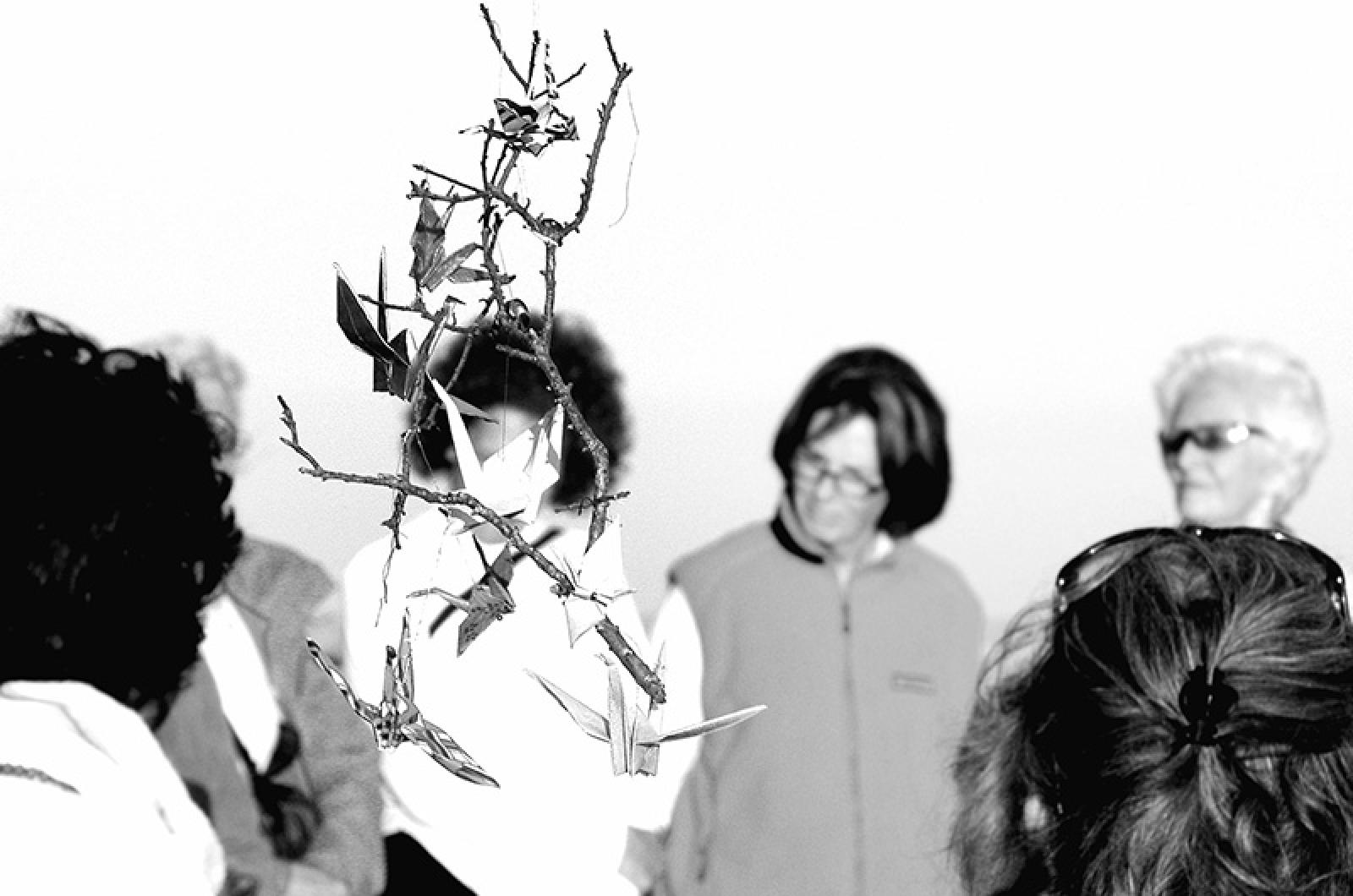Early last month, the 75th anniversary of the detonation of an atomic bomb over Hiroshima was marked with remembrances and renewed pleas for a ban on nuclear weapons.
A related anniversary passed with little fanfare this week: publication of one of the greatest works of journalism in the 20th century, authored by Vineyard summer resident John Hersey. It revealed the cataclysmic human cost of that first atomic weapon. At 8:15 a.m. on August 6, 1945, a single uranium bomb dubbed Little Boy flattened much of Hiroshima and killed an estimated 100,000-140,000 people. Untold thousands of others would perish in the following years from injuries related to the bomb and its unleashed radiation.
It wasn’t until a year later that Hersey’s article appeared in the August 31, 1946, issue of The New Yorker magazine. For the first time, Americans came to learn about the weapon’s true carnage, and not just on buildings, bridges and other features of a cityscape. It was information the U.S. military and other government officials had either covered up, downplayed or didn’t fully comprehend themselves, according to a new book, Fallout: The Hiroshima Cover-up and the Reporter Who Revealed It to the World, by author Lesley M.M. Blume.
Hersey’s article ran a whopping 30,000 words, which under normal circumstances would have been serialized in several consecutive issues. But editors Harold Ross and William Shawn, who had been working with Hersey in secret for months, must have realized this was a historic moment for the magazine, and decided to do something The New Yorker had never done before: devote an entire issue to one article.
Although just 32, Hersey had already won respect as a wartime reporter and earned a Pulitzer Prize in 1945 for A Bell for Adano, a novel about American troops trying to restore a Sicilian town’s 700-year-old bell, which had been melted down for bullets.
Hersey realized that telling the stories of a few could put a human face to the awesome but mind-numbing pyrotechnics inflicted on the home of a distant enemy. So he retraced the day of detonation through the eyes of six survivors — two medics, a German priest, a Japanese pastor, a young widow with children and a female clerk.
No editorializing, no sweeping condemnations, no polemics — just the power of their stories, told in detail. To this day, those details are shocking and heartbreaking
U.S. military and government officials had emphasized how Little Boy and Fat Man, the plutonium bomb dropped on Nagasaki three days later, had quickly brought a stubborn enemy to its knees, saving untold American and Japanese lives and shelving plans for a bloody invasion of Japan. There also was more than a little pride in the fact the U.S. had a monopoly — short-lived, as it would turn out — on this montrous new weapon.
At the same time, officials had made post-war access to Hiroshima difficult — Hersey didn’t reach the city until nearly 10 months after the blast — and brushed off reports of radiation deaths as Japanese propaganda, according to Blume. In fact, Manhattan Project leader Gen. Leslie Groves famously suggested post war Hiroshima was essentially radiation-free and told a Senate subcommittee that radiation poisoning “is a very pleasant way to die.”
To be fair, few press accounts challenged the government’s party line, especially when the country was weary of war and still enraged by Japan’s aggression and wartime atrocities.
But Hersey’s work, entitled simply Hiroshima, changed the conversation. It forced Americans to pause and consider that such an apocalyptic weapon could someday be turned on them; and, in a flash, one bomb could obliterate a U.S. city of similar size — Denver, Seattle or Houston, for example. He saw the piece not just as a cautionary tale about the fragility of humankind in the atomic age, but an example of journalism’s mission to hold accountable those who act in our name, writes Blume.
The article was quickly republished as a book and has never gone out of print, having sold millions of copies. And though Hersey would ultimately write more than two dozen works of fiction and nonfiction, he remains best known for Hiroshima.
In 1999, Hersey’s masterwork was named by a panel of experts assembled by New York University’s journalism department as the greatest piece of American journalism in the 20th century — not Watergate revelations, Rachel Carson’s Silent Spring, or Ida B. Tarbell’s muckraking dispatches about Standard Oil.
Hersey died in 1993 and is buried alongside his wife Barbara in the West Chop Cemetery. Yet his Hiroshima remains as relevant today as in 1946.
The Bulletin of the Atomic Scientists created a Doomsday Clock in 1947 to illustrate how manmade catastrophes pose an existential threat to humankind.
In early 2020, it moved the hands of the clock closer to midnight than they’ve ever been — just 100 seconds away — because of the twin threats of climate change and nuclear war.




Comments (1)
Comments
Comment policy »